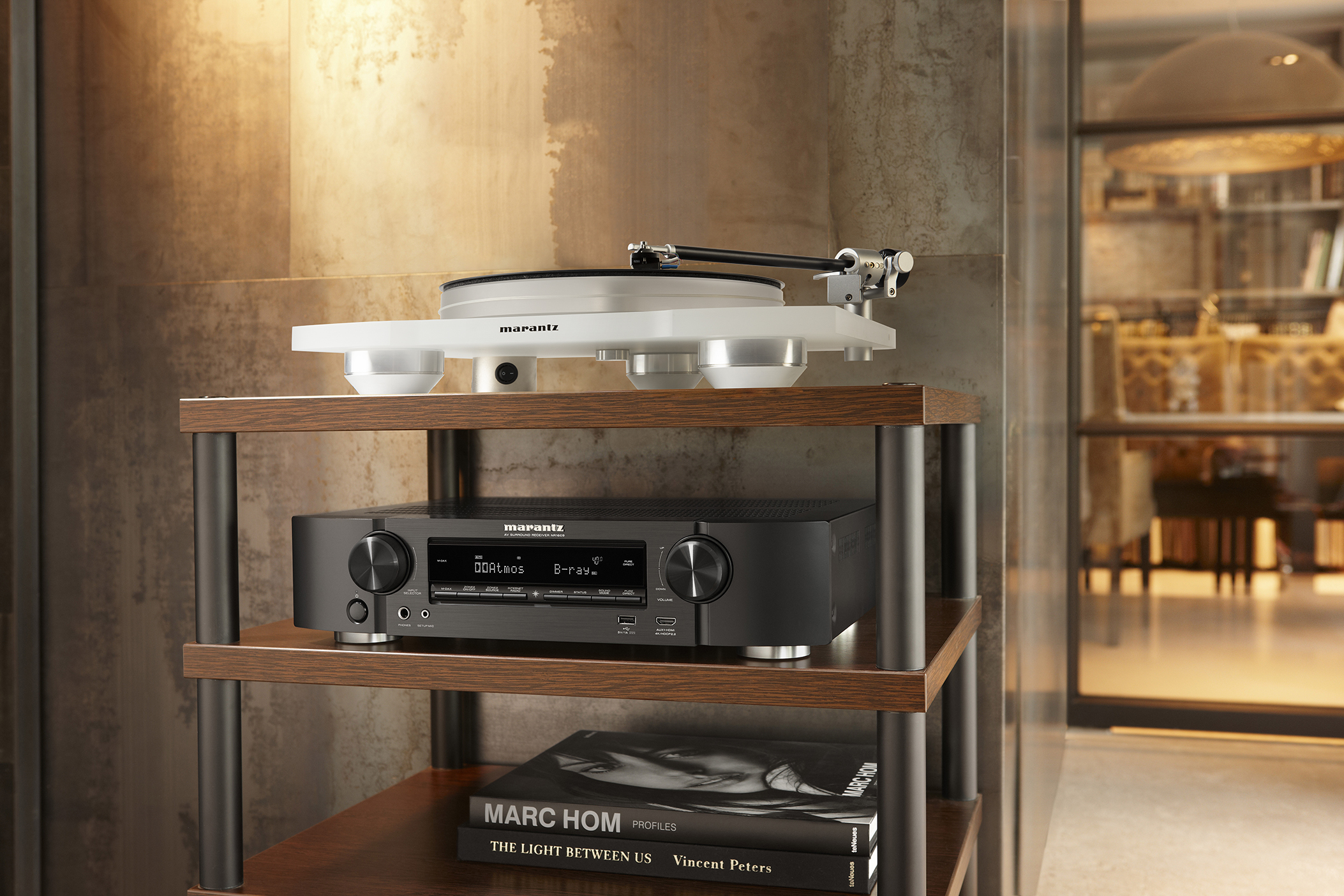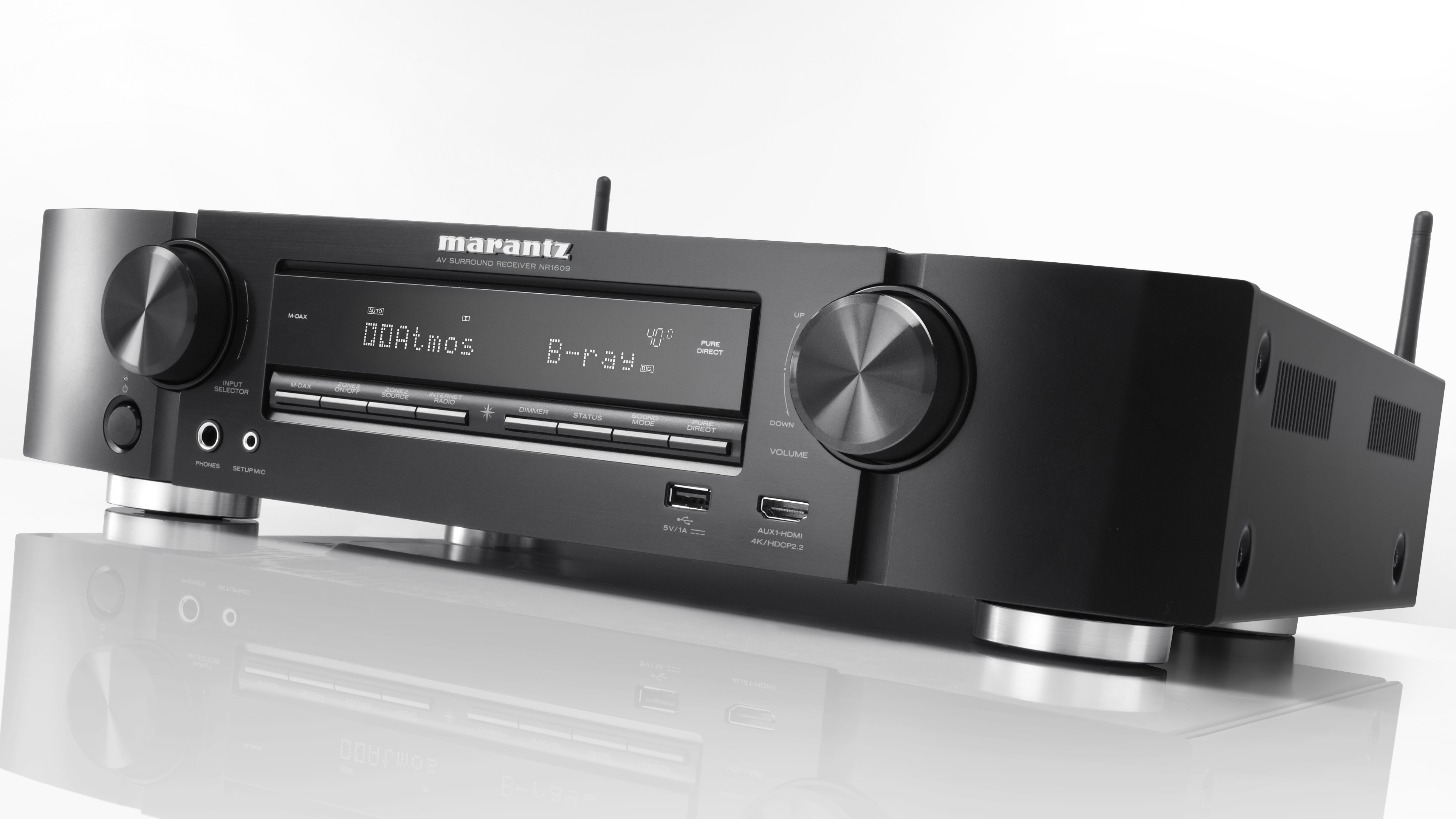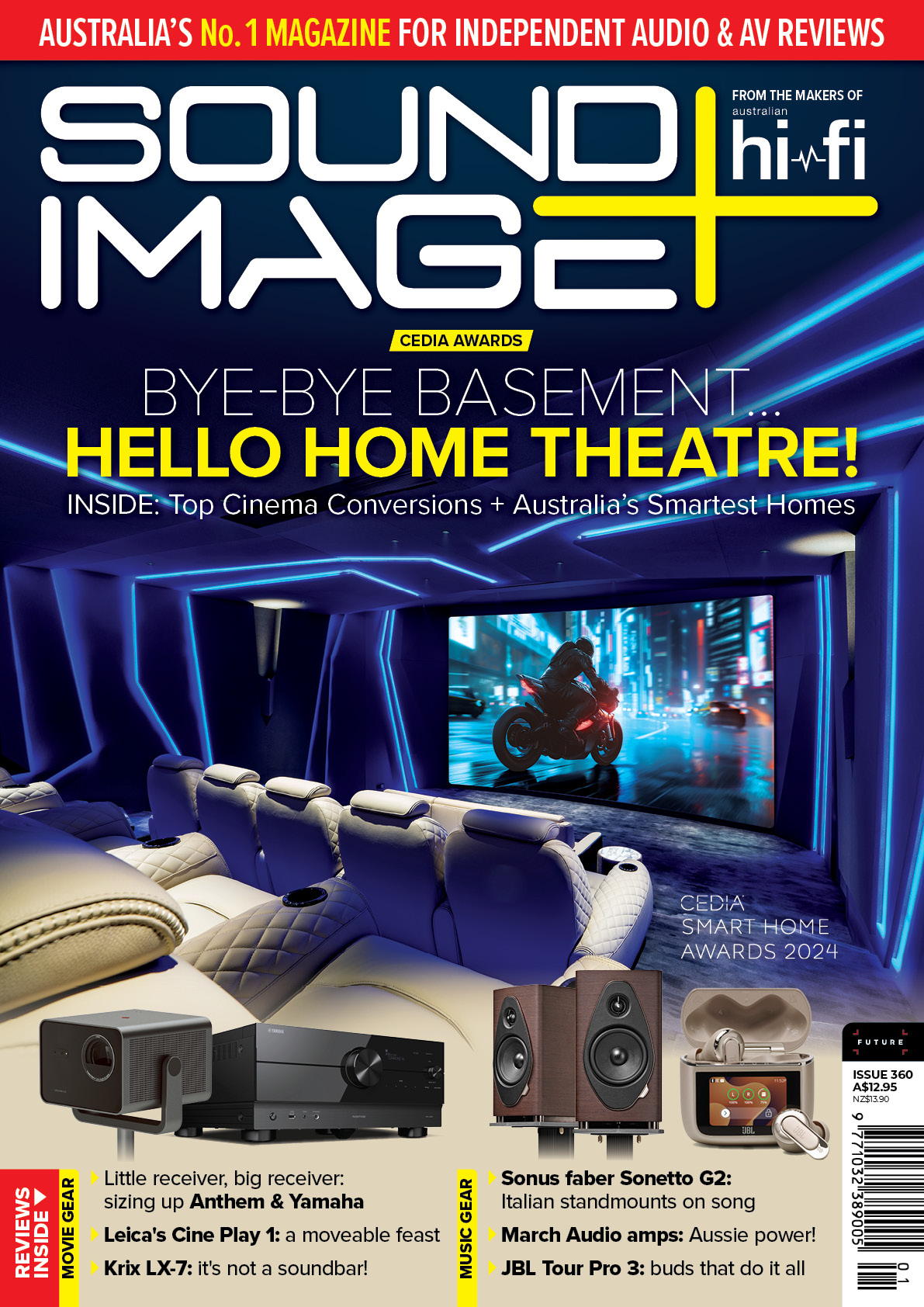Sound+Image Verdict
The Marantz 'slimline' NR1609 is a full-blown 7.1-channel AV receiver in all respects, except for a slightly reduced power output.
Pros
- +
Compact performance
- +
Excellent network capabilities
- +
All the functions needed for up-to-date home cinema
Cons
- -
Headphone output could be improved
Why you can trust What Hi-Fi?

This review originally appeared in Sound+Image magazine, one of What Hi-Fi?’s Australian sister publications. Click here for more information on Sound+Image, including details on how you can subscribe.
The Marantz NR1609 is the higher level model of the company’s two slimline networked receivers. This one is essentially a full-blown 7.1-channel AV receiver in all respects, except for a slightly reduced power output.
Equipment
The main visual difference is the height. It stands just 105mm tall, or a little over four inches. The seven amps produce 50W each, and can be switched to support four-ohm speakers for all channels. The surround+height systems of Dolby Atmos, DTS:X, Dolby Surround and DTS Neural:X are all supported in 5.1.2 mode. That is, you can choose between seven head-level speakers, or five plus two overhead. (Or you can bi-amp front speaker, drive a second zone and so on.)
There are eight HDMI inputs, including one on the front panel. There’s full UltraHD support on them all, along with video upscaling. Since last year’s version we see further evidence of the resurgence of vinyl — this receiver now also has a phono input (moving magnet).
This is a network receiver, with an Ethernet socket along with dual-band 802.11n Wi-Fi. Plus there’s Bluetooth, albeit limited to the standard SBC audio codec.

Performance
It’s tempting to say that a 50W per channel receiver just might not be able to deliver the goods in extremis. And that may even be true, depending on the speakers you are using. But the fact is, we installed this receiver in the place of a 150W nine-channel unit, simply plugging in the same speakers (minus the ceiling ones). And we’d be hard put to identify any real difference in performance.
Now, the speakers we used were all mainstream models of middling sensitivity and generally high performance. If ‘in extremis’ were to mean speakers with weirdly difficult impedances and exceptionally low efficiencies, well we’d probably suggest a different receiver. But choose sensible speakers and you’ll find, as we did, that the receiver has sufficient power to drive a home theatre system to very satisfying levels in quite a large room.
And, likewise, plenty of oomphh even for fine stereo work. We spent quite a bit of time spinning the vinyl on a Rega turntable and listening via the phono inputs on this receiver. We can’t say it took us back to the pre-CD systems of yesteryear, because it sounded significantly better than most such systems. For one thing, back in those days there was always a little hiss from the electronics. Not from this unit.
And back to that surround. The decoding of all formats, including Dolby Atmos and DTS:X, was excellent. We only had channels for two ceiling speakers rather than four, but we find that these two provide better than ninety per cent of the effect if properly handled. And this receiver did properly handle them. Even some movie content with 5.1 or two channels benefited. Particularly impressive was the rain on the car rooftop as Marion Crane approaches Bates Motel in the Gus Van Sant remake of Psycho.
The receiver also does a decent job of upscaling video, should you want it to.
Talking to the receiver
This is clearly the year in which we are starting to talk to our AV receivers. Well, almost. What we’re actually talking to is a device from Google or Amazon which can, in turn, control the receiver. Marantz home theatre receivers have support for the HEOS multiroom system built in. Recently the HEOS system was upgraded so that it can be controlled by the Amazon Alexa and Google Assistant systems. These are works in progress. You can expect their capabilities to be extended over time.
We had the receiver installed in a largely-Google venue, so we checked out the functionality with Google Assistant. That’s a system where you can use semi-natural language to ask questions of and issue commands to Google. You need a Google-compatible speaker of some sort. We have a Google Home Mini unit in that room (cost: we got it for AU$49 on special, and you can usually get one of these for less than AU$70).
We followed the instructions for setting it up, a big part of which involved giving both the receiver and the room it was in a name. We managed to mess that up because we accidentally gave the receiver the same name as a Chromecast device that was no longer connected, but which we hadn’t removed from the Google profile. So we went back and spent two more minutes repeating the process with a different name. And it worked. ‘Hey Google, pause the music.’ After a second or two, the music would pause.
That second or two was fairly consistent for all commands. We’d say something. The Google Home Mini unit would transmit our words to servers, possibly on the other side of the world, where they’d be decoded to text, then interpreted as control commands. Then the servers would work out what control codes were needed to tell the receiver to turn up the volume. Those commands would be sent (again, possibly, from the other side of the world) to the receiver. It would then act.
In the case of turning up or down the volume, it used 5dB increments. That seemed appropriate. If you want finer control (to 0.5dB) use the remote control, or use the HEOS app on your phone. As of this writing, we could pause the current track with a voice command, resume play, reduce or increase the volume, mute the sound, set the volume to an absolute number (0 to 98), and skip tracks. This worked with Spotify (played through the receiver’s Spotify Connect functionality), but it also worked with music being fed from our music server using DLNA functionality and an Android DLNA controller app.We understand that next year additional functions will be added, including music selection, power on/off switching, input selection, and so-called ‘implicit targeting’. That last is ‘control without the need of specifying the device name’. The fact is, we found that once we’d said the device name the first time, we could just issue further commands without saying it any more.
The problem with voice control of audio products is, as always, having to compete with the sound in the room. We found ourselves having to shout in order to be heard over the playback of King Crimson’s album ‘Starless and Bible Black’. At one point we told Google to ‘resume’. The music recommenced playback, but in the quiet moments we were perplexed to hear talking. It was our Android phone. Usually it defers to the Google Mini speaker to handle commands, but this time it decided to act, and resumed playback of a podcast we’d been listening to.

More network
If there’s one thing we’ve learned over the last couple of decades, it’s that this new tech stuff either improves markedly as time goes on, or it’s dropped completely. We reckon at least one of Google Assistant or Amazon Alexa is here to stay. We can imagine advantages already with the current capabilities: control from another room in the house, for example. And it’s just going to get better.
But don’t be confused. Even though you can control the receiver somewhat now, and more in the future, via Google Assistant, it is not Google Chromecast compatible. You feed music via DLNA or via AirPlay or via the HEOS protocols.
Meanwhile, the more standard network features continue to be excellent, albeit with one quirk. That quirk is that when we played network music in Direct Stream Digital format (both DSD64 and DSD128 are supported) using any of our usual DLNA music players, they were converted to 192kHz PCM. But using the HEOS app, they were fed natively. We suspect that the receiver is communicating something incorrect about its capabilities when queried by DLNA controllers. It also worked effectively with Apple AirPlay. With DLNA, AirPlay and Spotify Connect it showed a nice display of music details and cover art on the TV.
Headphones
The 6.35mm socket on the front panel really seems inviting for a quality pair of headphones, but how it sounds is going to depend very much on the headphones you use. We should mention that we’re not picking on Marantz especially here; this seems to be an affliction of most comparable companies. The problem is that the headphone output has an internal resistance of 468 ohms (error: ±3 ohms).
If you use headphones with an impedance that varies according to frequency — as so many do — the frequency response will swing quite widely in sympathy with the impedance variations. We think that this high output impedance is to protect a fairly basic circuit. We note that audiophile headphone amplifiers typically have an output impedance of two ohms or less, usually less than one ohm.
Verdict
Don’t let the headphone circuit put you off. We doubt you’re going to find significantly better in any competing models. Instead, accept that the Marantz NR1609 receiver is an excellent all-round entertainer in a nicely compact form.
Sound+Image is Australia's no.1 mag for audio & AV – sister magazine to Australian Hi-Fi and to the UK's What Hi-Fi?, and bestower of the annual Sound+Image Awards, which since 1989 have recognised the year's best hi-fi and home cinema products and installations. While Sound+Image lives here online as part of our group, our true nature is best revealed in the print magazines and digital issues, which curate unique collections of content each issue under the Editorship of Jez Ford, in a celebration of the joys that real hi-fi and high-quality AV can bring. Enjoy essential reviews of the most exciting new gear, features on Australia's best home cinemas, advice on how to find your sound, and our full Buying Guide based on all our current and past award-winners, all wrapped up with the latest news and editorial ponderings. Click here for more information about Sound+Image, including links to buy individual digital editions and details on how best to subscribe.


